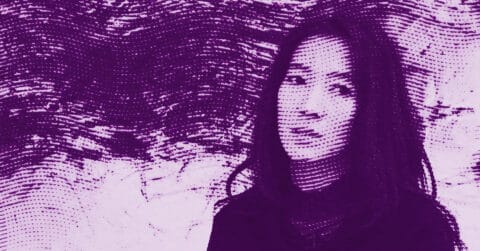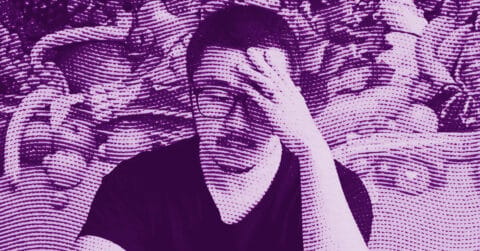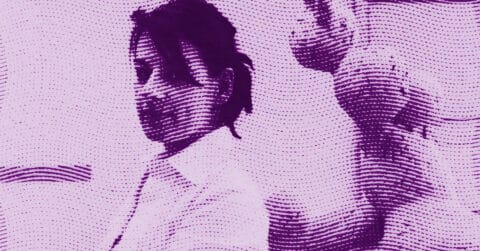Listen to me carefully, you bunch of snobs! Avery Singer (born in 1987) is the very embodiment of this new generation of artists who, armed with digital technologies, comes shaking the traditional foundations of painting with calculated insolence. Born and raised in New York by artist-projectionist parents, she grew up in the bohemian atmosphere of TriBeCa, immersed in the fumes of paint and the hum of the MoMA projectors where her father worked. A childhood redolent of celluloid and turpentine essence.
The first striking characteristic of her work is her almost obsessive relationship with digital technology. Singer uses the 3D modeling software SketchUp like others use their brush, thus transforming the architect’s tool into a weapon of massive deconstruction. She creates robotic figures, geometric spaces that seem taken from an 80s science fiction film, but with the surgical precision of a computer program. It’s as if Max Ernst had access to a MacBook Pro.
But make no mistake, this is not a mere technical feat. Singer plays with contemporary art codes like a cat with a dead mouse. Her early works, notably in the exhibition “The Artists” at the Kraupa-Tuskany Zeidler gallery in 2013, are a biting satire of the art world. She stages artist-robots in stereotypical situations: studio visits, meetings with collectors, artistic performances. It’s Bertolt Brecht meeting Black Mirror, a critical distancing that makes the guardians of the contemporary art temple grind their teeth.
The second characteristic of her work is her complex relationship with art history. Singer dialogues with historical avant-gardes, Constructivism, Futurism, Cubism, but not as a respectful student. She cannibalizes, digests, and regurgitates them into a completely new visual language. Take for example her appropriation of Naum Gabo’s “Head of a Woman”: she transforms it into a recurring motif, an interchangeable mask for her robotic characters. This approach would have made Clement Greenberg howl and Walter Benjamin smile.
In her practice, Singer uses the airbrush with maniacal precision, creating surfaces so smooth they become almost clinical. She pushes this logic even further with her Michelangelo ArtRobo machine, a computer-controlled airbrush system. It’s as if she seeks to eliminate any trace of the human hand, while creating profoundly human works in their questioning. This apparent contradiction lies at the heart of her approach: using technology to explore the limits of humanity.
Theodor Adorno would probably have seen in Singer’s work a perfect manifestation of his theory of “technology as ideology.” She uses the tools of the cultural industry, 3D software, automated airbrushes, to create works that criticize the same industry. It’s an intellectual tour de force that recalls the best pages of the “Dialectic of Enlightenment.”
Singer’s more recent works, especially those presented in “Reality Ender” at Hauser & Wirth, mark a significant evolution. She introduces autobiographical elements and reflections on collective trauma, notably through her personal experience of September 11, 2001. It’s as if Jean-François Lyotard met Don DeLillo in an East Village bar to discuss the end of grand narratives.
Her recent works incorporate references to internet culture, memes, Wojak characters, while maintaining a dialogue with art history. She thus creates a dizzying bridge between high culture and digital culture, between MoMA and 4chan. This kind of transgression makes purists grind their teeth but advances art.
Singer’s practice represents a radical break with the conventions of painting while remaining deeply rooted in its history. She uses technology not as a gadget, but as a means to question our relationship to the image, to reality, to authenticity. Her work asks fundamental questions about what it means to be an artist in the digital age, when the distinction between real and virtual becomes increasingly blurred.
This approach is reminiscent of Jean Baudrillard’s theory of simulacra: in Singer’s world, the copy becomes more real than the original, the virtual more tangible than the physical. But unlike some artists who merely ride the digital wave, Singer digs deeper. She explores the philosophical and existential implications of our relationship to technology.
For those who still think painting is dead, Singer proves it is very much alive, but it can mutate into something new, more complex, more ambiguous. She creates an art that reflects our era in all its technological complexity and existential uncertainty. It is an art that refuses the ease of spectacle while being profoundly spectacular.
















